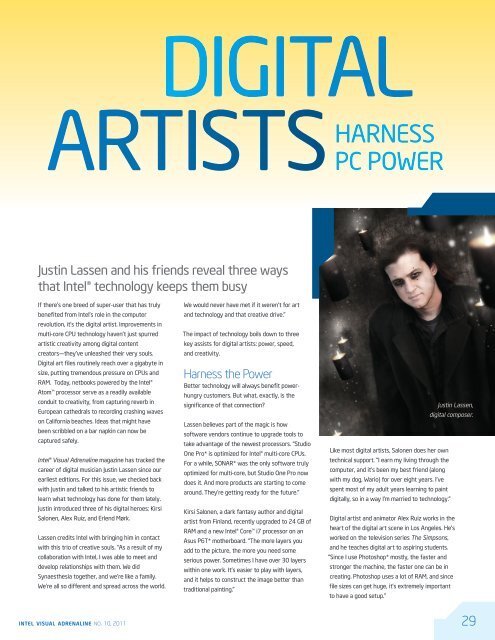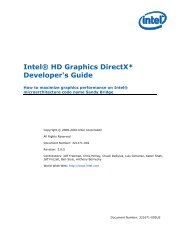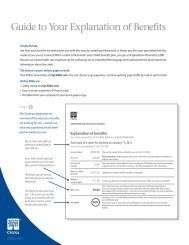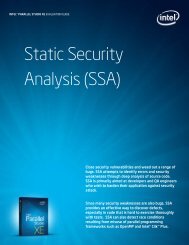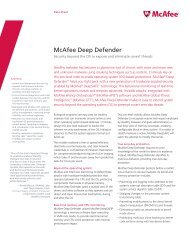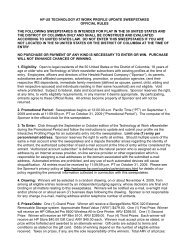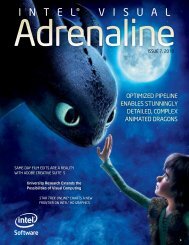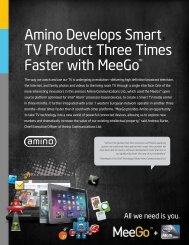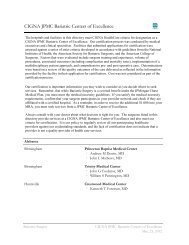Intel ® Visual
Intel ® Visual
Intel ® Visual
You also want an ePaper? Increase the reach of your titles
YUMPU automatically turns print PDFs into web optimized ePapers that Google loves.
DIGITAL<br />
ARTISTS<br />
Justin Lassen and his friends reveal three ways<br />
that <strong>Intel</strong><strong>®</strong> technology keeps them busy<br />
If there’s one breed of super-user that has truly<br />
benefited from <strong>Intel</strong>’s role in the computer<br />
revolution, it’s the digital artist. Improvements in<br />
multi-core CPU technology haven’t just spurred<br />
artistic creativity among digital content<br />
creators—they’ve unleashed their very souls.<br />
Digital art files routinely reach over a gigabyte in<br />
size, putting tremendous pressure on CPUs and<br />
RAM. Today, netbooks powered by the <strong>Intel</strong><strong>®</strong><br />
Atom processor serve as a readily available<br />
conduit to creativity, from capturing reverb in<br />
European cathedrals to recording crashing waves<br />
on California beaches. Ideas that might have<br />
been scribbled on a bar napkin can now be<br />
captured safely.<br />
<strong>Intel</strong><strong>®</strong> <strong>Visual</strong> Adrenaline magazine has tracked the<br />
career of digital musician Justin Lassen since our<br />
earliest editions. For this issue, we checked back<br />
with Justin and talked to his artistic friends to<br />
learn what technology has done for them lately.<br />
Justin introduced three of his digital heroes: Kirsi<br />
Salonen, Alex Ruiz, and Erlend Mørk.<br />
Lassen credits <strong>Intel</strong> with bringing him in contact<br />
with this trio of creative souls. “As a result of my<br />
collaboration with <strong>Intel</strong>, I was able to meet and<br />
develop relationships with them. We did<br />
Synaesthesia together, and we’re like a family.<br />
We’re all so different and spread across the world.<br />
We would never have met if it weren’t for art<br />
and technology and that creative drive.”<br />
The impact of technology boils down to three<br />
key assists for digital artists: power, speed,<br />
and creativity.<br />
Harness the Power<br />
Better technology will always benefit powerhungry<br />
customers. But what, exactly, is the<br />
significance of that connection?<br />
Lassen believes part of the magic is how<br />
software vendors continue to upgrade tools to<br />
take advantage of the newest processors. “Studio<br />
One Pro* is optimized for <strong>Intel</strong><strong>®</strong> multi-core CPUs.<br />
For a while, SONAR* was the only software truly<br />
optimized for multi-core, but Studio One Pro now<br />
does it. And more products are starting to come<br />
around. They’re getting ready for the future.”<br />
Kirsi Salonen, a dark fantasy author and digital<br />
artist from Finland, recently upgraded to 24 GB of<br />
RAM and a new <strong>Intel</strong><strong>®</strong> Core i7 processor on an<br />
Asus P6T* motherboard. “The more layers you<br />
add to the picture, the more you need some<br />
serious power. Sometimes I have over 30 layers<br />
within one work. It’s easier to play with layers,<br />
and it helps to construct the image better than<br />
traditional painting.”<br />
HARNESS<br />
PC POWER<br />
Justin Lassen,<br />
digital composer.<br />
Like most digital artists, Salonen does her own<br />
technical support. “I earn my living through the<br />
computer, and it’s been my best friend (along<br />
with my dog, Wario) for over eight years. I’ve<br />
spent most of my adult years learning to paint<br />
digitally, so in a way I’m married to technology.”<br />
Digital artist and animator Alex Ruiz works in the<br />
heart of the digital art scene in Los Angeles. He’s<br />
worked on the television series The Simpsons,<br />
and he teaches digital art to aspiring students.<br />
“Since I use Photoshop* mostly, the faster and<br />
stronger the machine, the faster one can be in<br />
creating. Photoshop uses a lot of RAM, and since<br />
file sizes can get huge, it’s extremely important<br />
to have a good setup.”<br />
intel visual adrenaline no. 10, 2011 29


